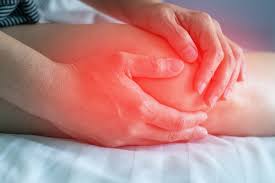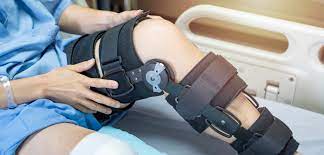What to do After Suffering a Torn ACL?

One of the most common knee injuries is a torn anterior cruciate ligament or ACL. Your ACL is a ligament that runs through the center of the knee and connects the femur to the shin. It stops the shin bone from moving forward past the thigh bone when making sudden stops or changes of direction when running. ACL tears are most commonly a result of playing sports. Although, they can also happen to people who work physically demanding jobs. Surgery is often required following an ACL tear. However, there are nonsurgical options. A doctor decides which treatment method is appropriate for the patient based on age, the injury’s severity, and the person’s overall fitness. No matter what, you will have to undergo physical therapy and proper rehabilitation to avoid long-term issues.

Using R.I.C.E
Immediately after you suspect you have torn your ACL, R.I.C.E is the best way to reduce pain and swelling until you can go to a doctor.
- R stands for rest. Keep weight off of the injured knee.
- I stand for Ice. Ice the injured knee for 20 minutes at a time.
- C stands for compression. Compress the knee with an elastic bandage or wrap.
- E stands for elevation. Position your leg above your heart when resting.
Nonsurgical treatment
In less severe cases, some patients can recover fully without surgery. However, nonsurgical treatment requires long rehabilitation through physical therapy. This method is for older patients who are less active and are willing to give up physically demanding activities. The patient must wear a knee brace and undergo extensive physical therapy to recover.
After Surgery
After a torn ACL, reconstruction surgery is necessary for athletes or people who want to continue performing physically demanding activities. Directly following surgery, the knee joint must be kept straight. While it will not be comfortable, it is vital to give the joint time to heal before stressing out your newly fixed ACL. Also, you must not put any weight on the injured knee until your surgeon says it is okay, so crutches or a wheelchair are required. A knee brace will also need to be worn to protect and stabilize the knee, and while it gets itchy and uncomfortable, it is imperative to wear it as much as possible to speed up recovery. Finally, rehabilitation through physical therapy is also essential for a successful recovery. While physical therapy will be annoying and painful, one must persevere and continue with therapy as prescribed. While everyone wants to get back to normalcy as soon as possible, your therapist and doctor will let you know when you can ease into the activities you love again.
Featured Clinician: Anthony Maritato, PT
FEATURED CLINICIAN: Anthony Maritato, PT Anthony Maritato, PT, MSPT, is a licensed physical therapist and co-founder of Total Therapy Solutions, a private practice outpatient physical therapy business that focuses on
Colleen Rapp Wins Friend of Private Practice Award
Long time patient advocate, Colleen Rapp, was awarded the APTA Private Practice Section’s Friend of Private Practice Award during the 2022 PPS conference. Colleen has long been standing up for
Top Tips for Relieving Nerve Pain
Top Tips for Relieving Nerve Pain If you suffer from nerve or neuropathic pain, then you can certainly attest to how it can throw a wrench in your day-to-day routine.
How Your Diet Can Cause Inflammation
How Your Diet Can Cause Inflammation Depending on the situation, inflammation can be a good thing or a bad thing. It is good in that it is your body’s way
What to Avoid After Knee Replacement Surgery
What to Avoid After Knee Replacement Surgery Knee arthroplasty, otherwise known as knee replacement surgery, is designed to relieve pain and restore function in severely diseased knee joints. No matter
How Physical Therapy Can Help You Avoid Reliance on Pain Medications
How Physical Therapy Can Help You Avoid Reliance on Pain Medications If you suffer from chronic pain, you know how managing pain can be a real challenge. Another day, another
Kyle Yancey
Latest posts by Kyle Yancey (see all)
- Top Tips for Relieving Nerve Pain - October 28, 2022
- How Your Diet Can Cause Inflammation - October 25, 2022
- What to Avoid After Knee Replacement Surgery - October 19, 2022
- How Physical Therapy Can Help You Avoid Reliance on Pain Medications - October 13, 2022
- Physical Therapy for Heart Disease - October 11, 2022
